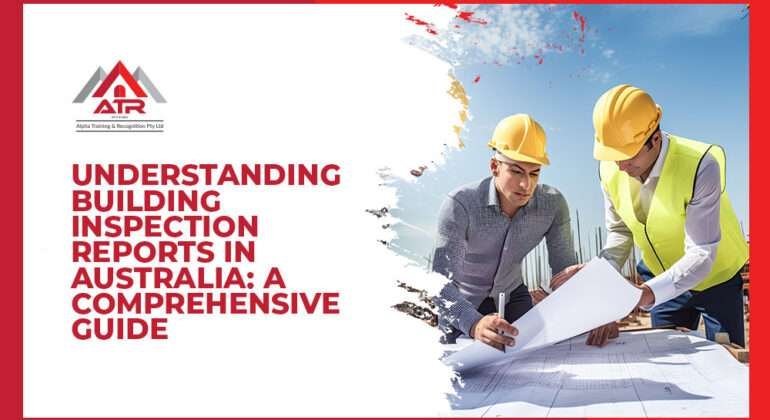Australia: a land of breathtaking contrasts, from the vibrant urban pulse of Sydney’s Harbour to the wild, rugged terrains of the Outback. It’s a nation where innovation meets tradition, where the dreams of owning a home resonate deeply within the national ethos. But like exploring the depths of the Great Barrier Reef or traversing the desert expanses, the path to homeownership is fraught with complexities and requires careful navigation. It is in this journey that the concept of building inspection emerges as a lighthouse, guiding prospective buyers, builders, and investors to safe shores.
So, what does inspecting a building mean in this context, and why has it become as vital to the Australian property landscape as sunscreen to a Gold Coast lifeguard?
Imagine standing on the precipice of a vast, unknown territory. Before you stretches a wilderness, filled with potential wonders and hidden pitfalls. Building inspection acts as a detailed map of this wilderness, revealing not just the superficial beauty but the underlying challenges and opportunities. It is the examination of a property, assessing everything from the structural integrity, plumbing, and electrical systems to the potential existence of pests. It’s an all-encompassing overview that provides a snapshot of the property’s current health, predicting its future well-being.
In cities like Sydney, Melbourne, and Brisbane, where real estate dynamics shift as rapidly as the tides of their famous beaches, building inspections become vital for a successful real estate transaction. Without this comprehensive insight, buyers might find themselves stranded in a financial sinkhole, buried under unexpected repair costs and legal issues. It’s akin to embarking on a journey through the Daintree Rainforest without a guide; the unprepared adventurer might become lost amid the complexities and unseen dangers.
Building inspections are not merely a modern practice. Their roots stretch back to a time when Australia was shaping its architectural identity, a period that saw the fusion of various global influences with indigenous sensibilities. The evolution of the building and inspection report mirrors this growth, becoming more refined and comprehensive over time, and serving as a critical tool in the creation and preservation of Australia’s unique urban landscapes.
Now, we find ourselves in an era where the building report in Sydney or the house inspection checklist in Australia isn’t an option but a necessity. It’s a practice as ingrained in the culture as cricket or the famed Australian barbecue. It’s not just about bricks, mortar, and legal compliance; it’s about dreams, security, and the pursuit of a sanctuary called home.
Whether you are a first-time homebuyer, an investor, a builder, or simply curious, this guide aims to illuminate the pathway of building inspection in Australia. From understanding the core concept to diving into the various stages and components, including critical stage inspections, we unravel the layers that make this process essential in the Australian context.
As we embark on this journey, let the spirit of exploration guide us, for just as every nook and cranny of this magnificent country has a story to tell, so does every building that stands upon its soil. So let’s start by answering the quintessential question: What is a building inspection in Australia? And how does it shape the very fabric of our home-building projects?
1. Decoding Building Inspection
What is a Building Inspection in Australia?
At its core, building inspection is like a medical check-up but for buildings. Imagine visiting a GP. They’ll check your vitals, ask about symptoms, and provide a prognosis. Similarly, a building inspection examines the property’s ‘vitals’, ensuring everything is in good shape.
2. The Anatomy of Building Inspection Reports
Reports after building inspections are not just technical jargons; they’re a diary of the property’s health. In essence, a building report in Sydney would resemble a travel journal narrating the city’s architectural wonders, except it’s for a single property.
3. The Pivotal Critical Stage Inspection
What is Critical Stage Inspection?
Think of constructing a building as baking a multi-layered cake. Each layer requires attention. If you miss checking even one, the whole cake might collapse. Critical stage inspections are those checkpoints, ensuring every ‘layer’ of your building is robust and compliant.
4. Crafting the Perfect House Inspection Checklist in Australia
Just as one might have a checklist before embarking on a Great Barrier Reef dive – equipment check, weather conditions, diving partner readiness – a house inspection checklist in Australia ensures you’re all set for a smooth property transaction. Key elements include structural soundness, plumbing efficiency, electrical safety, and pest resistance.
5. Timing is Everything: When to Get Building Inspection
Ever tried catching a tram in Melbourne at peak hours? A minute early or late, and you might miss it. Similarly, the timing of your building inspection is crucial. Ideally, it should be conducted before finalising the purchase or before the end of the cooling-off period.
6. Tips from the Frontlines: House Inspection Tips
Getting a house inspected is like hunting for hidden gems in the vast Australian outback. You need to know where to look. Some invaluable house inspection tips include checking water pressure, inspecting for mould in hidden corners, and ensuring windows and doors function seamlessly.
7. Best in the Business: Building and Pest Inspection in Sydney
For Sydneysiders or anyone keen on investing in Sydney’s real estate, choosing the best building and pest inspection in Sydney is paramount. Just as one would trust only the best guides for trekking the rugged terrains of the Outback, entrusting your property inspection to the best ensures no stone is left unturned.
8. The Ultimate Buyer’s Aid: Buying House Checklist Inspection
Purchasing a property can be as exhilarating as a hot air balloon ride over Canberra, but you’ll want to ensure your journey is smooth. The buying house checklist inspection is your compass, guiding you through essentials like the property’s age, recent renovations, and local amenities.
The world of building inspection in Australia is as multifaceted and complex as the sprawling landscapes that stretch across this great continent. From the vibrant, bustling streets of Sydney, where building inspections are as essential as the ferries crisscrossing the harbour, to the quieter, coastal towns that lie along the stunning Great Ocean Road, where property dreams often begin with the whisper of waves, the building inspection process weaves its way through every facet of Australian life.
So what has this comprehensive guide unveiled about building inspections, and how have we answered the many questions that surround this pivotal practice? If one were to draw an analogy between building inspection and something quintessentially Australian, it might be likened to navigating the vast and complex ecosystem of the Great Barrier Reef. Just as divers must understand the tides, the marine life, the underwater topography, and even the weather patterns to truly appreciate the Reef’s beauty and avoid its potential dangers, so too must homeowners, builders, and investors understand the intricate web of building inspections to successfully navigate Australia’s ever-changing property landscape.
It’s not simply about seeking the best building and pest inspection in Sydney or ticking off a house inspection checklist in Australia. It’s about understanding the heart and soul of a property. It’s about listening to the whispers of a building, from the creaks of the floorboards to the silent strength of the foundation. It’s about appreciating that every inspection report is a biography, each page filled with stories of craftsmanship, architectural genius, challenges overcome, and sometimes, dreams unfulfilled.
In understanding the importance of timing, knowing when to get a building inspection, and applying critical house inspection tips, we equip ourselves with tools as essential as a surfer’s understanding of the waves or a bushman’s knowledge of the land. We align ourselves with the natural rhythm of Australia’s property environment, harnessing the wisdom of experience, the insights of technology, and the guidance of experts who’ve traversed this path countless times before.
As we’ve explored the multi-layered concept of critical stage inspections, unravelled the complexity of the building and inspection report, and sifted through the tips and insights that make this process both an art and a science, we’ve tapped into a vein of understanding that transcends mere transaction. Building inspection is a relationship, a bond that connects people with properties, dreams with realities, and aspirations with achievements.
So as the sun sets over the horizon, casting a golden glow over cityscapes and countryside alike, let us reflect on the journey we’ve taken through the world of building inspections in Australia. Let us appreciate that this is more than a process; it’s a tradition, a safeguard, a pathway to a future filled with possibilities. Just as the ochre-red soil of the Outback tells a tale of time and endurance, and the ancient rainforests sing songs of growth and resilience, so too does the building inspection process narrate the ongoing story of Australia’s architectural evolution.
May this guide serve not only as an informational roadmap but also as an inspirational compass, pointing the way towards wise decisions, sound investments, and homes filled with joy, love, and the unmistakeable spirit of Australia. Whether you’re just setting foot on this path or have travelled it many times before, may you find in building inspection not just answers but insights, not just solutions but wisdom, and not just a report but a reflection of the very essence of what it means to build, to dwell, and to be, in this land we call home.
Note: Remember, every building has its story. Inspection reports are its biographies. So, the next time you come across one, take a moment to appreciate the narrative it presents.



